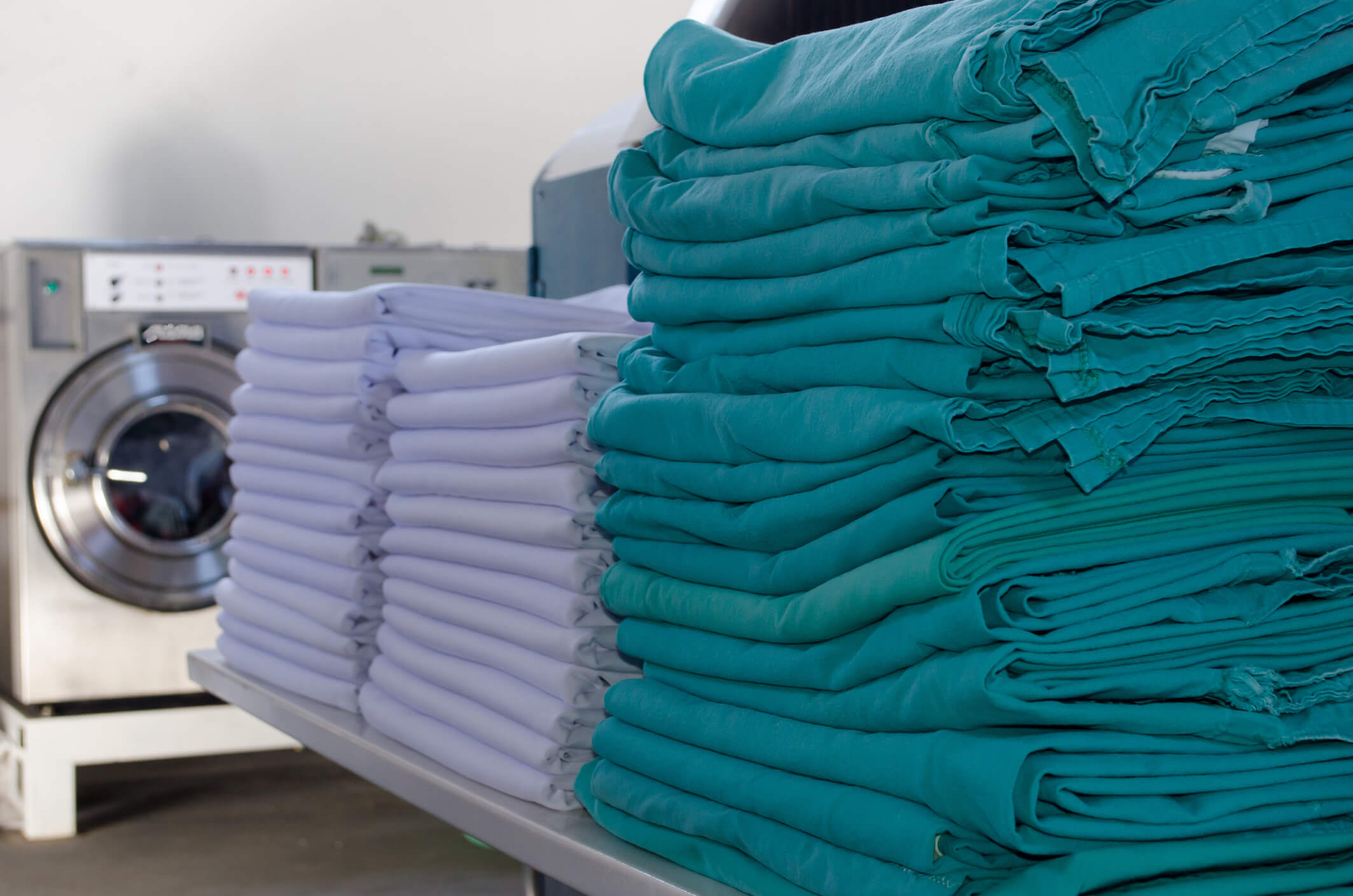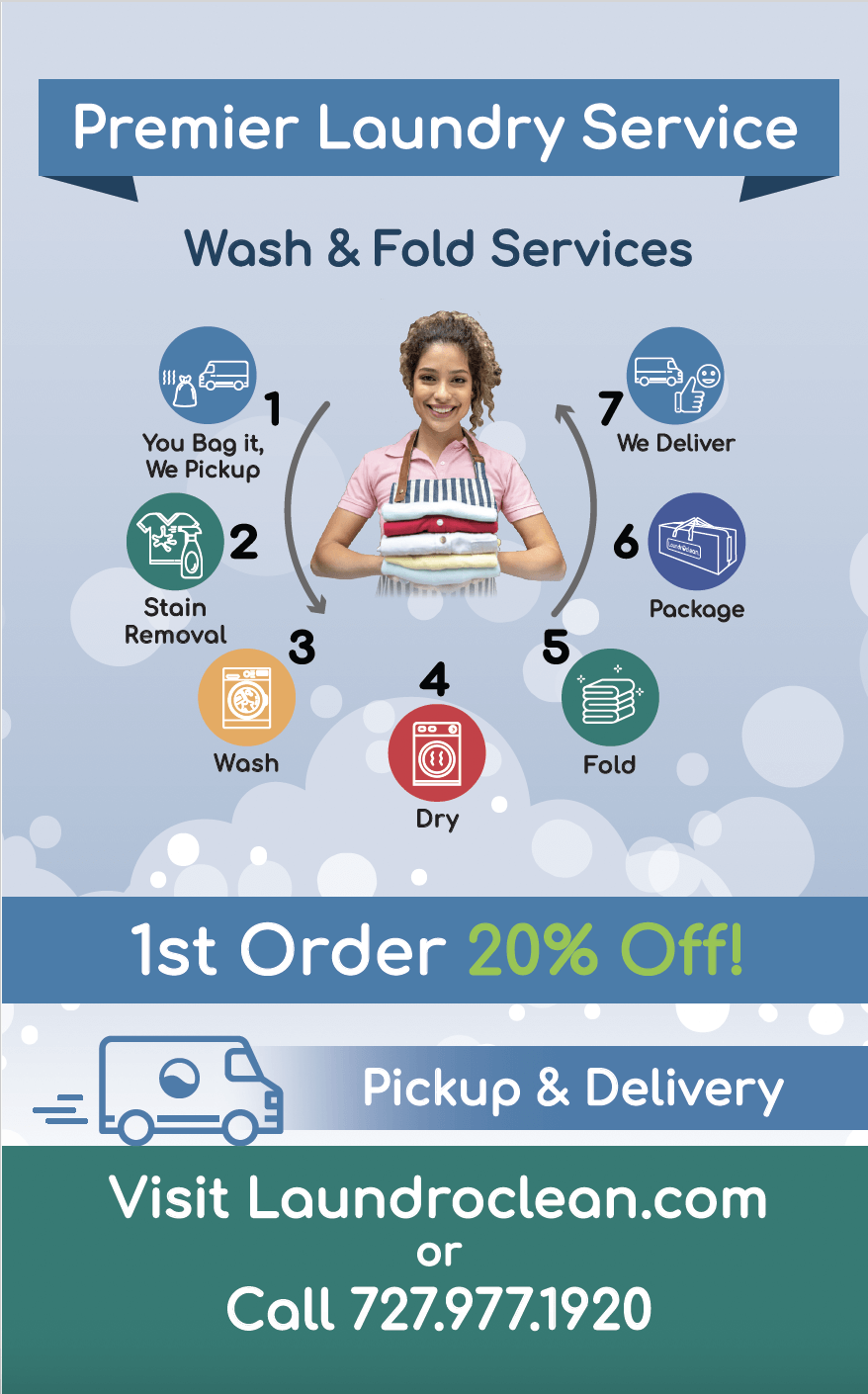Healthcare Laundry Services are taken seriously by the entire staff at LaundrOclean™. We realize that certain specific precautions should be taken when handling any garment that could have been exposed to known or unknown pathogens.

According to the CDC,
“Laundry in a health-care facility may include bed sheets and blankets, towels, personal clothing, patient apparel, uniforms, scrub suits, gowns, and drapes for surgical procedures. Although contaminated textiles and fabrics in health-care facilities can be a source of substantial numbers of pathogenic microorganisms, reports of health-care associated diseases linked to contaminated fabrics are so few in number that the overall risk of disease transmission during the laundry process likely is negligible. When the incidence of such events are evaluated in the context of the volume of items laundered in health-care settings (estimated to be 5 billion pounds annually in the United States), existing control measures (e.g., standard precautions) are effective in reducing the risk of disease transmission to patients and staff. Therefore, use of current control measures should be continued to minimize the contribution of contaminated laundry to the incidence of health-care associated infections. The control measures described in this section of the guideline are based on principles of hygiene, common sense, and consensus guidance; they pertain to laundry services utilized by health-care facilities, either inhouse or contract, rather than to laundry done in the home.”
The Occupational Safety and Health Administration defines “contaminated laundry” as
"...laundry which has been soiled with blood or other potentially infectious materials or may contain sharps." [Emphasis added]. Urine and feces not containing blood are not per se OPIM within the meaning of the standard. The standard's definition of contaminated laundry would apply to the laundry generated in healthcare settings such as hospitals and long-term care facilities. Consequently, staff members whose duties expose them to contaminated laundry from healthcare settings are considered to have an increased risk for exposure to blood and OPIM. The Bloodborne Pathogens Standard has special provisions for the handling of contaminated laundry. For example, employers must assure that contaminated laundry is bagged or containerized at the location where it was used, and are prohibited from allowing the sorting and rinsing of contaminated laundry at the point of use.”
Experts are divided regarding the practice of transporting clothes worn at the workplace to the healthcare worker’s home for laundering. Although OSHA regulations prohibit home laundering of items that are considered personal protective apparel or equipment (e.g., laboratory coats), experts disagree about whether this regulation extends to uniforms and scrub suits that are not contaminated with blood or other potentially infectious material. Health-care facility policies on this matter vary and may be inconsistent with recommendations of professional organizations. Uniforms without blood or body substance contamination presumably do not differ appreciably from street clothes in the degree and microbial nature of soilage. Home laundering would be expected to remove this level of soil adequately. However, if health-care facilities require the use of uniforms, they should either make provisions to launder them or provide information to the employee regarding infection control and cleaning guidelines for the item based on the tasks being performed at the facility. Health-care facilities should address the need to provide this service and should determine the frequency for laundering these items. In a recent study examining the microbial contamination of medical students’ white coats, the students perceived the coats as “clean” as long as the garments were not visibly contaminated with body substances, even after wearing the coats for several weeks. The heaviest bacterial load was found on the sleeves and the pockets of these garments; the organisms most frequently isolated were Staphylococcus aureus, diphtheroids, and Acinetobacter spp. Presumably, the sleeves of the coat may make contact with a patient and potentially serve to transfer environmentally stable microorganisms among patients. In this study, however, surveillance was not conducted among patients to detect new infections or colonizations. The students did, however, report that they would likely replace their coats more frequently and regularly if clean coats were provided. Apart from this study, which documents the presence of pathogenic bacteria on health-care facility clothing, reports of infections attributed to either the contact with such apparel or with home laundering have been rare.

Commercial clients who wish to learn more about LaundrOclean™ and how we would handle, and more importantly “return” your healthcare laundry to your facility with the understanding that we are a trusted “partner” in earning your trust, please feel free to contact us a 727-977-1920 to discuss further. If you would prefer to speak with us in person, we would be pleased to meet with you or your representative at a convenient time.
Contact us today to learn how competitive we can be.
We would be happy to schedule an appointment and visit with you at your location.
Don’t take our word for it. Our clients love working with us.
All rights as to images, protocols, methods, & their respective use (p) 2023, LaundrOclean™, LLC, and its affiliates and assigns and licensors All rights reserved . “LaundrOclean™”, “Escape Laundry Day!™”, and “Have A Clean Day!™” are Common Names and/or Trademarks of LaundrOclean™.
No claim to copyright is made for the original U.S. Government Works or for documentation, definitions, or use of terminology that may be used in the Public Domain.
